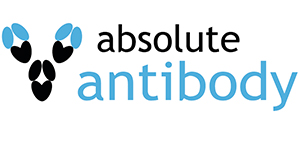Anti-MOG (8.18-C5)
Anti-MOG [8.18-C5], Recombinant, IgM kappa, Human
SKU
ABAAb03388-15.0-BT
Packaging Unit
500 μg
Manufacturer
Absolute Antibody
Availability:
loading...
Price is loading...
CloneID: 8.18-C5
Antigen Long Description: The original antibody was generated immunizing mice against Thy-1-depleted rat cerebellar glycoproteins.
Buffer Composition: PBS only.
Uniprot Accession No.: Q63345
Specificity Statement: The antibody binds specifically to MOG, recognising a conformational epitope. MOG is a transmembrane glycoprotein expressed on the surface of oligodendrocytes in the central nervous system, that plays an important role in maintaining the structure of the myelin sheath. Monoclonal antibodies that target MOG are involved in the pathogenesis of the demyelinating disorder multiple sclerosis (MS). Animals injected with anti-MOG antibodies have been shown to display symptoms of human MS, and can thereby be used as models to study the development of the disease. The epitope interacting with the antibody is expressed in rat, mouse, guinea pig, cow, monkey, and humans.
Application Notes (Clone): This antibody was detected in white matter tracts of the central nervous system by immununohistochemistry. The antibody detected MOG by western blot analysis (Linnington et al., 1984; PMID: 6207204). The specificity of the original format of the antibody and Fab fragment was confirmed by ELISA analysis (Litzenburger et al., 1998; PMID: 9653093 and Menge et al., 2011; PMID: 22093619). This antibody was used for detection of MOG expressed on B cells by flow cytometry (Na et al., 2021; PMID: 34149706). MOG from HeLa cells were immunoprecipitated with the antibody. Immunofluorescence was performed on HeLa cells using this antibody (Boyle et al., 2007; PMID: 17573820). The antibody triggered in vivo expansion of CD4+ T cells in spleen, inguinal, and cervical lymph nodes (Kinzel et al. 2016; PMID: 27022743). The crystal structure of the Fab version of this antibody was determined in complex with MOGIgd (Breithaupt et al., 2003; PMID: 12874380).
Antigen Long Description: The original antibody was generated immunizing mice against Thy-1-depleted rat cerebellar glycoproteins.
Buffer Composition: PBS only.
Uniprot Accession No.: Q63345
Specificity Statement: The antibody binds specifically to MOG, recognising a conformational epitope. MOG is a transmembrane glycoprotein expressed on the surface of oligodendrocytes in the central nervous system, that plays an important role in maintaining the structure of the myelin sheath. Monoclonal antibodies that target MOG are involved in the pathogenesis of the demyelinating disorder multiple sclerosis (MS). Animals injected with anti-MOG antibodies have been shown to display symptoms of human MS, and can thereby be used as models to study the development of the disease. The epitope interacting with the antibody is expressed in rat, mouse, guinea pig, cow, monkey, and humans.
Application Notes (Clone): This antibody was detected in white matter tracts of the central nervous system by immununohistochemistry. The antibody detected MOG by western blot analysis (Linnington et al., 1984; PMID: 6207204). The specificity of the original format of the antibody and Fab fragment was confirmed by ELISA analysis (Litzenburger et al., 1998; PMID: 9653093 and Menge et al., 2011; PMID: 22093619). This antibody was used for detection of MOG expressed on B cells by flow cytometry (Na et al., 2021; PMID: 34149706). MOG from HeLa cells were immunoprecipitated with the antibody. Immunofluorescence was performed on HeLa cells using this antibody (Boyle et al., 2007; PMID: 17573820). The antibody triggered in vivo expansion of CD4+ T cells in spleen, inguinal, and cervical lymph nodes (Kinzel et al. 2016; PMID: 27022743). The crystal structure of the Fab version of this antibody was determined in complex with MOGIgd (Breithaupt et al., 2003; PMID: 12874380).
| SKU | ABAAb03388-15.0-BT |
|---|---|
| Manufacturer | Absolute Antibody |
| Manufacturer SKU | Ab03388-15.0-BT |
| Package Unit | 500 μg |
| Quantity Unit | STK |
| Reactivity | Human, Mouse (Murine), Rat (Rattus), Monkey (Primate), Guinea Pig, Cow (Bovine) |
| Clonality | Recombinant |
| Application | Immunofluorescence, Western Blotting, ELISA, Flow Cytometry, Immunohistochemistry, In Vivo Assay |
| Isotype | IgM kappa |
| Host | Human |
| Product information (PDF) | Download |
| MSDS (PDF) | Download |

 Deutsch
Deutsch







